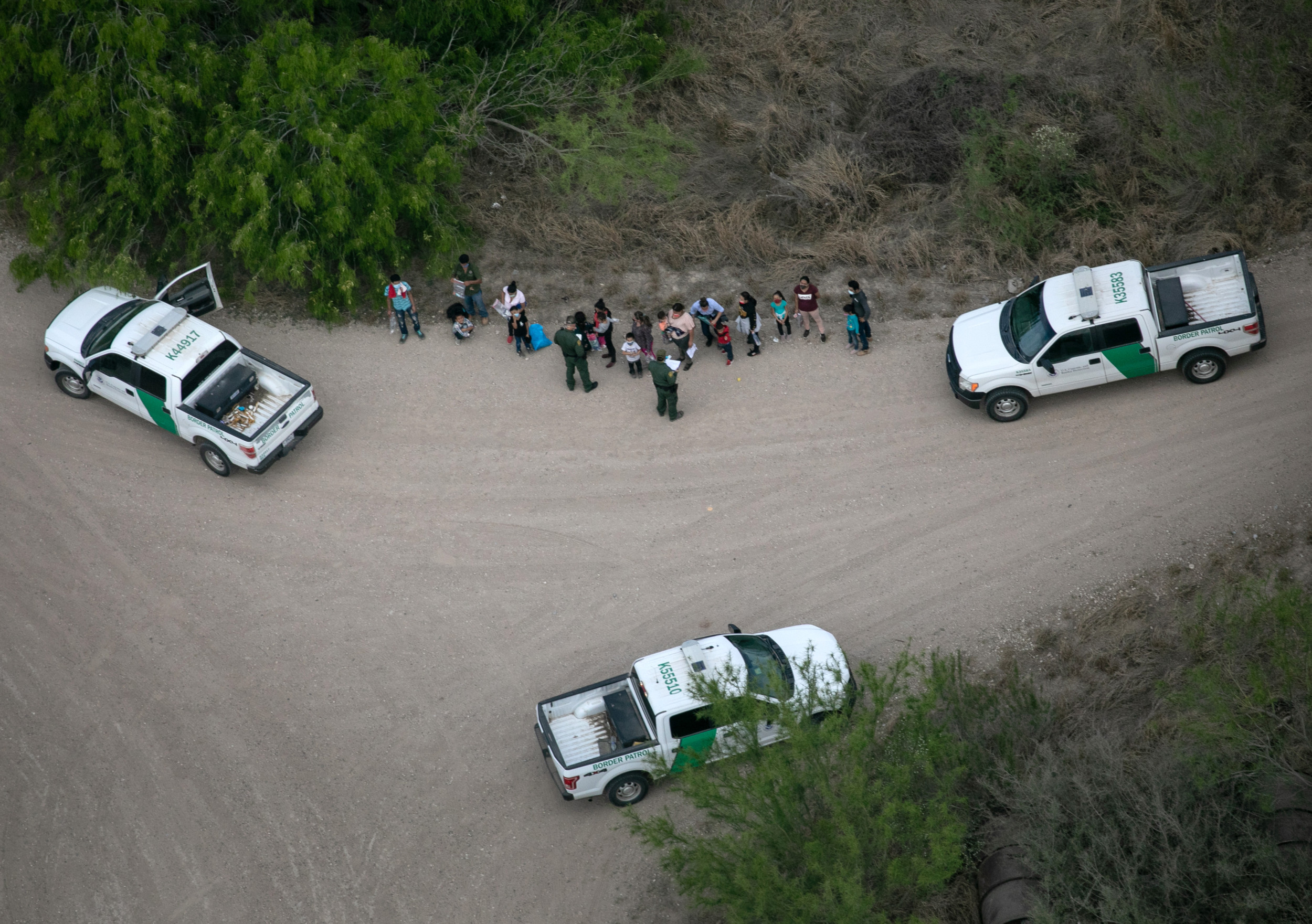
Hospital staff is always quick to notice when there’s a Hummingbird in the facility. If the doctors and nurses have been through this before, they know the birthing team tending to the pregnant patient will now include one more. Medical duties in the delivery room will be up to the clinicians, but staying overnight with the new mother? The Hummingbird will do that.
And advocating for her? The Hummingbird will handle that. As for the traditional cultural ceremonies performed during and after birth, the Hummingbird will take care of that, too. Think of a typical doula — a person, usually a woman, trained to provide emotional and physical support before, during and after birth — and you’d identify only some of a Hummingbird’s role.

The Hummingbird’s work as an Indigenous doula, tending to Indigenous women, is particularly consequential. It leans on traditional birthing practices involving song and spiritual rituals, all while fighting for safety in a health care system where the Native population faces some of the worst outcomes. “A Hummingbird’s .
.. mission is healthy Indigenous babies born into healthy Indigenous families, supported by healthy Indigenous communities,” Camie Goldhammer (Sisseton Wahpeton Oyate), founding executive director of , tells TODAY.
com. She describes bygone times when Native doulas were the norm. A local woman, entrusted by the community, would traditionally support birthing women in the tribe through pregnancy until they welcomed new life and beyond.
Until recently, the role had fallen out of practice. But a new cohort of doulas is doing something about it. Federal assimilation policies beginning in the 19th century smothered the Indigenous doula’s role alongside Native languages, religions and cultures, experts say.
such policies to elevated maternal mortality and morbidity rates among Indigenous people. Now, organizations across North America are resuscitating the practice of Indigenous doulas. They're training them to offer culturally safe, emotional and physical care, relying on traditional knowledge and reestablishing their place in the health care system: by the sides of Indigenous birthing women, where today’s doulas say they were always meant to be.
The skills of Indigenous doulas were once passed down from the generation above through word of mouth and demonstration. Now they're being taught in workshops and formal training sessions, proof of the cultural erasure the Indigenous community had to and continues to endure, experts say. "We do have a long history of historical trauma as it relates to reproductive health care,” says , Ph.
D., (Diné/Lakota/Taos Pueblo) assistant professor at the Johns Hopkins Center for Indigenous Health, tells TODAY.com.
Starting in the 19th century, the United States federal government , in many cases forcibly removing them from their homes and families, to “Americanize” them by colonizers’ standards. They were separated from their cultures and identities, including their names. Their families, some of whom never saw their children again, were either shuffled into urban areas or onto reservations, where their medical practices were deemed substandard.
In response, the government promoted dependence on Western medicine by establishing a series of initiatives and Native health agencies . The longest-standing of them, the Indian Health Service, remains and today. Meanwhile, laws , forcing Native women to give birth in hospitals without midwives and doulas.
As a result, the experts say Indigenous people today are at once disconnected from traditions lost to federal policies but close enough to their complex ancestry to know the value of what they’re missing. “Many of our women are only one or two generations removed from forced sterilization within the federal health care system,” Richards points out. In the 1960s and '70s, , some teens, were sterilized, often without consent, which was subsidized by the federal government.
And so Native women today are forced to grapple with the rooted in historical, systemic discrimination, which, experts say, has seeped through the decades. Today, for every 100,000 live births, American Indian and Alaska Native women die during delivery, the second-highest rate following Black women. They are 2.
3 times more likely to die during childbirth compared to their white counterparts. And, according to the , 93% of these deaths are preventable. American Indian and Alaska Native women experience gestational diabetes at a rate , postpartum depressive symptoms twice as much as white women, and, for those living in rural areas, the rates of chronic conditions that .
A Hummingbird takes on many roles at once. Most Native doulas do. When Goldhammer founded Hummingbird Indigenous Family Services in 2021, she’d been a lactation consultant, clinical social worker and doula for a decade.
“I was the only Native doula that I really knew of in the area,” she says. So, she sought to train others who could offer full-spectrum care to Indigenous women in Washington state’s King County. A doula doesn’t deliver the baby, like a doctor or midwife will.
Theirs is a non-clinical role responsible for navigating the health care system alongside expecting mothers, tackling the barriers that might keep them from necessary services and resources. Doulas are typically available to communicate with clients 24/7, advocate for their medical preferences and look out for signs of postpartum mental distress. They offer solutions when yet another birth center shutters its doors and might even be the ride when the nearest hospital is suddenly two hours away.
Hummingbird doula duties begin during pregnancy and continue through birth and three months postpartum, sometimes longer. The doula must be immersed in the birthing person’s medical routine, life and family. Goldhammer aptly calls her clients “relatives.
” This closeness speaks to a time when Native doulas, also called birth workers or birth keepers, were grandmothers or tribe “aunties” — no genetic relation required. “We care for them and protect them the same way we would our own blood,” says Goldhammer. Today's Indigenous doulas aren’t forging a new practice.
They’re reshaping an established approach within a modern context. They create birthing plans, present options for birth facilities, explain what mothers can expect from their next visit to the midwife or doctor, offer language services, and arrange for birthing ceremonies traditional to the mother’s tribe — whether that’s celebrating baby’s first laugh, a cedar bath for baby, smudging, burying placenta, or singing and drumming during delivery. “What we do is empower (mothers) to make decisions and know that they have choices and that they deserve excellence and that they can go wherever they feel safe,” says Goldhammer.
And, if need be, “we absolutely are a buffer between families and hospital staff,” she adds. It’s an Indigenous doula's responsibility to shoulder a mother's stress as she navigates a mainstream medical model that could leave her traumatized. For many Indigenous women, working with a doula for the first time lends to complex emotions, Melissa Brown (Sagkeeng First Nation/Navajo) tells TODAY.
com. A doula and certified midwife, she’s co-founder and lead trainer at , an Indigenous doula training program based in Manitoba, Canada. She says birthing mothers often feel relieved to be connected with a doula who understands them, but “they grieve for what they didn’t get in previous hospital experiences.
...
Because for some people, even just stepping into a hospital or into a clinic, their blood pressure goes up, their heart starts racing.” Zaagi’idiwin's training, offered virtually and in-person, treats birth work as both prevention and reclamation — preventing the consequences of discriminatory health care and reclaiming ceremonial spaces for Indigenous women, whether in a birth center, home or hospital. Their doulas are trained in a range of tasks from sharing recipes and encouraging exercise to identifying health warning signs and helping moms build a reliable support system.
And for those who are disconnected from their ancestry, a Zaagi’idiwin doula will do the work of uniting them with it, bringing in a ceremony they might not have known was theirs to embrace. The demand for both Hummingbirds and Zaagi’idiwin's services shows no signs of slowing. Zaagi’idiwin’s network is spread throughout North America, and Brown and her co-founder, Candace Neumann, travel at least twice a month to universities, tribes and hospitals to train doulas, some of whom end up working as Hummingbirds or for other Indigenous initiatives decolonizing birth work, which are growing in numbers.
They're booked until the end of next summer. Hummingbird Indigenous Family Services, meanwhile, will have served 175 families by the end of 2024, Goldhammer predicts, as its waitlist multiplies. Beyond birthing services, Hummingbird's other programs support abortion care, pregnancy loss and fertility challenges, the last of which is mostly used mostly by two-spirit and queer families.
In August 2023, Hummingbird also launched , a privately funded pilot program with the goal of showing Indigenous mothers "they are enough," the website explains. Participating families will receive $1,250 a month until their child turns 3, a total of $45,000, to help combat housing, health and other disparities. The doula care leads to better birth outcomes.
Their involvement in birth reduces stress and anxiety for mothers. And show doula services reduce rates of cesarean delivery, babies are less likely to have and more likely to initiate breastfeeding, and mothers less likely to experience birth complications. Evidence linking doula support to improved maternal or infant mortality and morbidity rates is still nascent, but a Hummingbird has never lost a mother or a baby.
When a Hummingbird doula is present with a birthing person, “they are quite literally treated differently,” says Goldhammer. She regularly observes better quality care from clinicians when an Indigenous doula is watching. And yet, she says, “we’re still constantly surprised at what’s done in front of us.
” Medical and provider bias persists, she adds, total equity still at a distance. As of today, 19 U.S.
states and Washington, D.C., reimburse doulas through Medicaid, according to data from the .
The first was California in 2023. There are nine more that are initiating the process, while some states have adjacent programs. The rest of them, plus some U.
S. territories , still wait for improved access to doulas. Medical facilities are beginning to recognize the need for change, too, Janelle Palacios, Ph.
D., (Salish/Kootenai) nurse midwife, researcher and founder of , tells TODAY.com.
Hospitals, she says, “tend to standardize people’s experiences ...
in an attempt to provide the best care. But there’s now more attention given to patient-centered, personalized care.” Leaders in the Indigenous community are creating toolkits to orient hospitals toward culturally safe care that makes space for ceremony, and some of them are starting to listen.
Making Amends, an initiative Palacios worked on, lists to improve the health and safety of American Indian and Alaska Native mothers and infants. The CDC also recently launched the , which Palacios worked on too, to amplify resources women say they need most for healthy birth outcomes. “It’s all about educating patients, families and providers to listen to women when they say that they have a symptom that could be indicative of preeclampsia, hemorrhage, infection, mental health issues,” Palacios says.
That it took a campaign to be heard is telling. “It just demonstrates to me that we have a long way to go in our nation, let alone in our own Native communities," she adds. Centering women, Palacios says, is the foundation for bettering reproductive health.
And Indigenous doulas are part of the movement showcasing the many ways birth can look and all the positive things it can be. Freelancers in a grassroots effort, Indigenous doulas have made considerable headway, but it’s an effort experts say they shouldn’t have to take on alone. “It’s going to take all of us walking together to do this,” Palacios says.
She describes a view that celebrates wholeness in many Indigenous cultures: The mind, body, soul and emotions are linked. “Everything is integrated,” Palacios says. “You cannot heal one part without healing all parts of it.
” Health Reporter/Editor.












